

To send a message to an author, click on the author's name at the end of the article.
This Month in Ag Connection | Ag Connection - Other Issues Online
Most producers keep records of the number of animals owned and track purchases and sales but maintaining production records will help facilitate better decision-making. The philosophy of not being able to change or improve what is not measured holds true when talking about production records.
Keeping records from breeding to weaning can provide an overall view of herd performance and pinpoint areas where changes can lead to improvements. Improvements outside of monetary changes are also important to consider, such as better time management, increased labor efficiency, and infrastructure improvements. Production records consist of data starting with breeding records and continue with pregnancy checking, calving, and weaning.
Breeding Records: The minimum goal is to determine the number of females exposed in a defined amount of time. This will serve as the denominator in calculating pregnancy and calving rates. Producers using artificial insemination should include breeding dates, sire information, and breeding methods.
Pregnancy Checking Records: Pregnancy checking allows producers to determine conception rates and perhaps make culling decisions. Recording the date of checking, bred or open, and possible number of days bred or pregnancy stage. To determine the pregnancy percentage for the herd, divide the number of pregnant females by the number of exposed females. This information is used to make management decisions such as culling open females to avoid feeding non-producing animals for commercial operations. Registered operations may decide to roll opens over to the next breeding season.
Calving Records: The goal is to calculate calving percentage. Although keeping up with calving records during the entire season can be time consuming, the data can provide valuable information to rank and evaluate individual females. Producers should record the birthdate, sex, dam, and possibly birth weight at calving. Optional data includes calving ease, and teat and udder scores. At the end of the calving season the calving percentage is calculated by taking the number of live calves born divided by the number of exposed females.
Weaning Records: Recording weaning weights during the final stage of the production cycle allows producers to calculate average daily gain (ADG) and weight per day of age (WDA). Ideally, these weights are collected using on-farm scales for greater accuracy, but sale barn weights can still provide information.
Source: Heather Conrow, Livestock Specialist
This Month in Ag Connection | Ag Connection - Other Issues Online
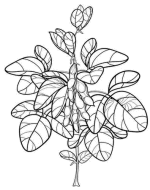
Soybean Cyst Nematode (SCN) is a devastating pest of soybeans in the U.S. When SCN infects the roots, plants may appear healthy yet suffer significant yield loss. Symptoms include yellow leaves, plant stunting, and in severe cases, plant death. These symptoms may not appear until infestations are very high and may be confused with other causes like nutrient deficiencies, herbicide injury or drought stress.

After the nematodes hatch, the juveniles penetrate the root and begin feeding. This dramatically affects plant growth by limiting the root's ability to take up nutrients and water and reduces the number of nitrogen-fixing nodules plants develop.
Once a field is infested, SCN cannot be eradicated, only managed. Crop rotation is one of the best ways to handle the pest. If a host crop is not available, the nematodes cannot reproduce. See the box for a list of host and non-host crops and weeds. Host crops, in addition to soybean, include birdsfoot trefoil, alsike, crimson and sweet clovers, lespedeza, and vetch. Non-host crops include alfalfa, canola, red, white and ladino clovers, corn, cowpea, forage grasses, small grains (barley, oats, rye, and wheat), and sorghum. Weed control is important in infested fields since some weeds serve as hosts, including henbit, deadnettle, common and mouse-ear chickweeds, and field pennycress, which are all common winter annual weeds.
SCN is spread through the movement of soil. Work and plant fields that are not infested before those that are. This will reduce potential transfer of SCN on equipment. Clean soil from equipment when moving between fields.
Planting resistant varieties is one way to manage the pest. The most common line of resistance is PI 88788. Because this has been used for more than 30 years, some nematodes have adapted and are able to reproduce on the roots of plants with PI 88788 resistance. Rotate sources of resistance when selecting varieties.
Soil can be screened for SCN egg presence and the severity of the infestation. Dr. Mandy Bish, University of Missouri Extension Plant Pathologist and Director of the SCN Diagnostic Clinic, reminds farmers the SCN Diagnostic Lab, with the support of the Missouri Soybean Merchandising Council, is offering four free SCN egg counts to Missouri farmers in 2024. More information can be found at SCNdiagnostics.com.
Nematodes are not distributed uniformly in a field. When collecting samples, divide fields into 10-to-20-acre tracts based on soil type, typography, and locations in the field where disease was present, or yield was lower last year. Randomly collect soil from 20 locations in the field using a probe or shovel. Sample to a depth of eight inches, which is deeper than the six-inch samples collected to analyze soil for nutrients. Mix the soil well and put approximately one pint of soil in a plastic bag. Keep the sample out of the sunlight and excessive heat. Do not let the sample become too dry. Mail samples to a testing laboratory as soon as possible.
For more information refer to MU Publication No. G4450, Soybean Cyst Nematode: Diagnosis and Management, https://extension.missouri.edu/publications/g4450 or contact an MU Field Specialist in Agronomy.
Source: Valerie Tate, Agronomy Specialist
This Month in Ag Connection | Ag Connection - Other Issues Online
University of Missouri has new tools and resources for cover crops. The most recent is a new website https://covercrop-econ.org/ which is a cover crops economics support tool. The purpose of the website tool is to help growers understand the impact of cover crops on profitability.
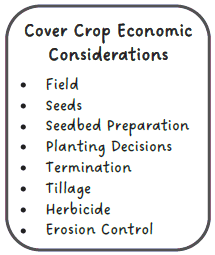
The in-depth tool includes many details on all aspects of growing cover crops. The first step allows the grower to enter a field by address or GPS coordinates. After entering the field identification, users can choose the default value of labor and diesel fuel or change the values. Next, select the cover crop species, seeding rate and the seed price per pound. The tool has built in default seeding rates and prices, but users can adjust both.
Then the seedbed preparation and planting method is chosen. Next, select the termination method of the cover crop which leads to choices of equipment. The following steps walk users through a series of questions about changes to the crop management system due to using cover crops. For example, did the tillage practice change?
The next module allows for adjustments in fertility. Users can input fertilizer credits for the cover crop or apply additional nutrients. Reductions or additions to herbicide costs is the following adjustment. The next step is inputting any soil erosion savings. Then users evaluate the financial impact if the cover crop is grazed by livestock. The final step allows users to adjust the yield of the cash crop.
The input data is used to give users a summary of what those changes do economically. Users will see a summary of total costs and total benefits and then the bottom line of the total economic cost, which is the total costs minus the total benefits. Users can go back and change the input data to see the effects on the total benefits.
Another new resource is guidesheet, Selecting Cover Crop Seeding Machinery (G1209) which can be downloaded (https://extension.missouri.edu/publications/g1209) in pdf format or printed. The focus of the guide is equipment used for planting cover crops. Even though seeding takes place late summer/fall, it is good to have time to learn about the advantages and disadvantages of equipment especially if considering purchasing or modifying equipment.
Source: Mary Sobba, Ag Business Specialist
This Month in Ag Connection | Ag Connection - Other Issues Online
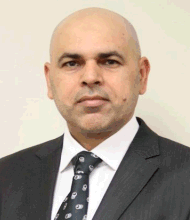
Jawad Al Juboori - a livestock field specialist focusing on poultry. He is located in Columbia at the Boone County Extension Center and will serve all counties. He intends to advance Missouri's commercial and "backyard" poultry industry by developing and delivering the newest science available.
Jawad grew up in the suburban area of a city called Karbala, in Iraq. Born into a family with a farming background, he was a farm owner and broiler chicken grower from 1996-2011.
He has a bachelor's degree from the University of Baghdad in Baghdad, Iraq, a master's degree in poultry nutrition Stephen F. Austin State University, and a doctorate in poultry science (specializing in poultry nutrition) from Texas A&M University.
As a postdoctoral researcher within the Poultry Science Department at Texas A&M University, Jawad was an active member of Christopher A. Bailey's laboratory, which has cutting-edge research facilities, enabling him to lead innovative projects in poultry nutrition. He instructed undergraduate classes in poultry science at Texas A&M University.
From 2004 through 2011, he was a Research & Extension Specialist in the Agriculture Department of Iraq. As the primary point of contact for broiler growers, he formulated diets, evaluated flock performance, and conducted feed ingredient tests.
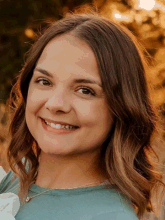
Chrisee Brandl - is a livestock field specialist in the east central region, with her office at the Callaway Extension Center.
Chrisee has an Associate of Science degree (emphasis in science, technology, engineering and math) from Moberly Area Community College, a bachelor's degree in plant sciences (emphasis in breeding, biology and biotechnology) from MU and a master's degree in plant sciences (focusing on establishment of tall fescue using sunn hemp as a companion crop under rotational grazing management) from MU.
She worked as a graduate research assistant for Dr. Harley Naumann, assisting in lab analysis on forage quality and assisted in field work on various research projects focusing on the forage livestock interface.
She grew up in Paris, MO and spent time on her great-grandparents' farm hunting and fishing. She remains on the farm with her husband and daughter, and small herd of cattle in New Bloomfield.
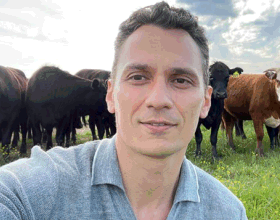
Thiago Martins - is the new beef reproduction state specialist. In this role, he will educate beef producers about the importance of reproductive biotechnology to increase reproductive efficiency, consequently increasing cow-calf operation efficiency. Dr. Martins also has a partial research appointment that focuses on advancing reproductive biotechnologies, aiming to optimize the likelihood of conception following fertility services. Prior to joining MU Extension, he worked at Mississippi State University as an assistant professor in beef cattle science.
Thiago grew up with both rural and metropolitan experiences. His parents lived in Sao Paulo, the capital of Brazil. Growing up, his father had a two-acre plot of land while his grandfather lived on a 1,000-acre ranch with a few cows. On weekends and holidays, his family spent their time at his father's small ranch and visited his grandfather's ranch. Spending time with the pigs, chickens, goats, and cattle sparked his interest in veterinary medicine. While attending vet school, he developed a strong interest in bovine reproduction. Thiago then got a residency in Theriogenology, a master's in animal production, and a Ph.D. in animal reproduction. His master's thesis and Ph.D. dissertation were developed in collaboration with beef cattle producers.
Publishing Information
Ag Connection is published monthly for Northeast and Central areas of Missouri producers and is supported by the University of Missouri Extension, the Missouri Agricultural Experiment Station, and the MU College of Agriculture, Food and Natural Resources. Managing Editor: Mary Sobba.